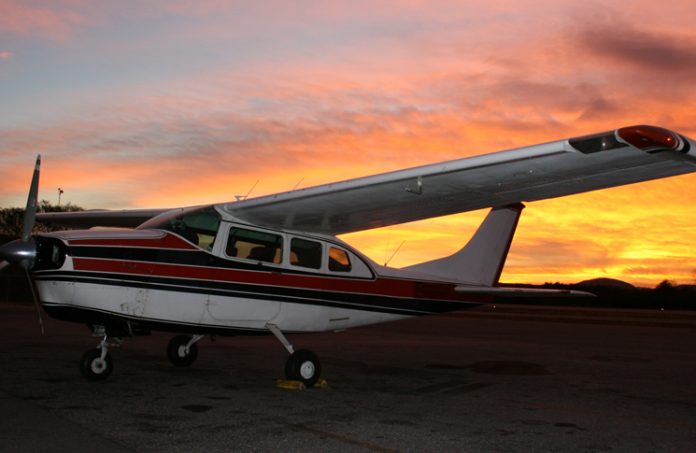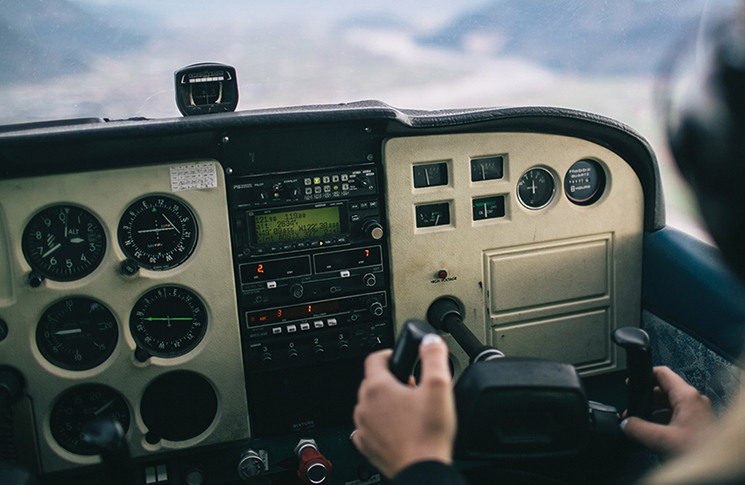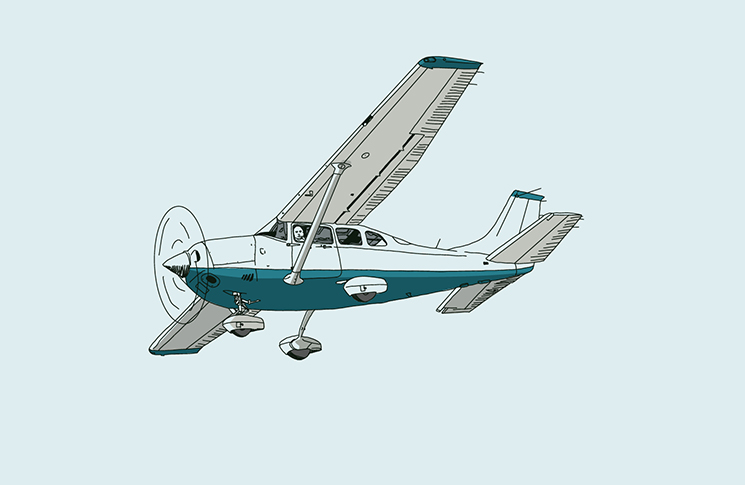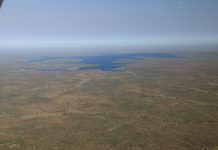
Back in the early 80’s I was flying a new Cessna 210 for a company based in Central Western Queensland, servicing an area from Emerald in the east to Birdsville in the far west. I had a command instrument rating, single- and multi-engine endorsements and over 1300 flight hours. I was enjoying flying in the normally clear (CAV-OK) conditions west of the coast and confident in my ability to handle any flight situation that might present itself.
This particular weekend found me staying out west and after a big Saturday night with a notorious co-worker and a few more beers than normal, I was looking forward to a relaxing sleep-in.
Unfortunately, this was not to be. At about 10 am the local police called, asking if I could help return a runaway youth who had ‘bussed it’ to the coast and had been detained by the Rockhampton police, to be released into his father’s care. I knew the father personally. He was the chef at the local club where I often ate evening meals. I agreed to ‘privately’ fly the father to Rockhampton, pick up the son and fly both back home.
The old artificial horizon (AH) in my 210 had tumbled on my last flight from the coast and it was going to be fixed on Monday. Weather was forecast to be the ‘typical CAV-OK’ for the entire flight there and back, with light and variable winds. If we left before midday we could be back before 5 pm, all in daylight VFR, so the AH wasn’t required. (This was assumption number one.)
I filed the flight plan and headed out to the airport to fuel and pre-flight the 210. I had ordered two drums which were ‘supposed’ to have been delivered on Friday. Unfortunately, they hadn’t turned up—no real problem because I had enough to get to Rockhampton with reserves and I could fill up there. I was determined to get away on time and the ERSA said fuel was available. (This was assumption number two.)
We got away on time but climbing out the indicated airspeed seemed slower than usual and the altimeter was ‘sticking’ every now and then, but after a few thousand feet it came good. I suspected mud wasps or water in the pito-static system but convinced myself that it had cleared and promptly ignored it. (This was assumption number 3.)
The rest of the flight to Rockhampton was uneventful with smooth flying all the way. On arrival the police and the ‘runaway’ were waiting and I contacted the tower to arrange fuel. Apparently the refueller had just left and it would be at least 45 minutes and $50 cash to get him back. I didn’t have $50 cash.
There was just enough fuel to get to Emerald plus minimum reserves. The weather was still CAV-OK and if I could get a quick turnaround I could still get back before last light. I phoned the Emerald refueller who agreed to wait for me. The flight was uneventful and true to his word, the refueller was waiting for us. We refuelled and got on our way. Last light would be okay, but just. (This was assumption number 4.)
My Cessna had a fuel injected engine and a 12-volt battery. Cold, the combination worked well, but hot starts involved very precise timing of boost, mixture and throttle and with 12 volt you only had one go. Miss it and you had to wait till the engine cooled or had a ground power start.
Nine times out of ten the magic worked for me; but this time I missed.
We were the only ones left at the airport, so it looked like we would have to spend the night at Emerald. As if on cue, a local cab driver arrived at the airport.
‘Do you need a lift into town mate?’ he asked us.
After hearing our story he said the magic words, ‘I’ve got a set of jumper leads in the taxi. How about I try and jump start you?’
Last light was ticking away, but ‘get home-i-tus’ was taking over and I decided to give it go.
We took off chasing the setting sun.
Descending on approach into Barcaldine it got darker and darker. Luckily the runway lights came on as expected. Then the altimeter and airspeed started sticking and lagging behind again.
Now just remember, dark in the outback is totally different than in a built-up area. Dark is ‘black dark’, and with ‘partial panel’ night flight without a functioning AH and a dubious airspeed indicator and altimeter, I was starting to sweat despite the cool temperature.
I planned the approach to come over the top of the runway at approximately 1500 feet, extend the landing gear, and very slowly turn left over the town on a downwind leg, then cautiously left on base and final, holding further decent until picking up the runway lights.
On final I reduced the power slightly and started a shallow decent.
We felt high, but with a questionable altimeter I was reluctant to steepen my approach until the landing lights picked up the runway surface. We also felt fast despite the 70 knots indicated, but I didn’t want to stall. Finally, the landing lights picked up the runway and I could see I was both high and fast … really fast. I chopped the power and pushed the nose over to get the plane on the ground and began to float. My heart was racing but there was no way I was going to attempt a go around in the ‘total dark’ of the outback.
After what seemed like an eternity … I got the mains on the runway, retracted the flaps, pulled back for full aerodynamic breaking, stood on the brakes and stopped just short of the end of the runway with the bush looming large.
There was silence in the cabin. With shaking legs I taxied to the terminal with nothing more serious than a bruised ego having used every last metre of that runway.
I am now retired after accumulating over 8500 flight hours and 35 years in GA and have learned to avoid assumptions without confirmation.
ASSUME–makes an Ass out of U and Me.





Good read, you are not alone there, most pilots would have a tale to tell where hindsight would have been great!
And that was your “new” C210!
A ‘bold’ pilot or poor risk management?!
I would love to have a chat with your maintenance providor about his work “on your new 210”. I think that he has a lot to answer for.Not that I am letting you off the hook about your landing,As the post above states :”a bold pilot,or poor risk management”was at play on this occassion
Out of the comments only Andrew shows some sense, the others give the impression they now it all and would never find themselves in an awkward situation, the main thing you learn with experience is expect the unexpected and you will never be disappointed.
Most accidents are pilot error ..stats seem to confirm this. Notwithstanding, stories like this are invaluable for newbies in particular. Some armchair pilots always seem to get great pleasure in wagging their collective fingers and rarely offering any real constructive advice for the reader to learn from.
Thanks for sharing even though it happened long ago.
Me shakes me head once again!!
Of great interest and value, thanks for telling your story. The drive to get the job done, coupled with incidents beyond our control, can rapidly spiral. We’ve all been there, one way or another.